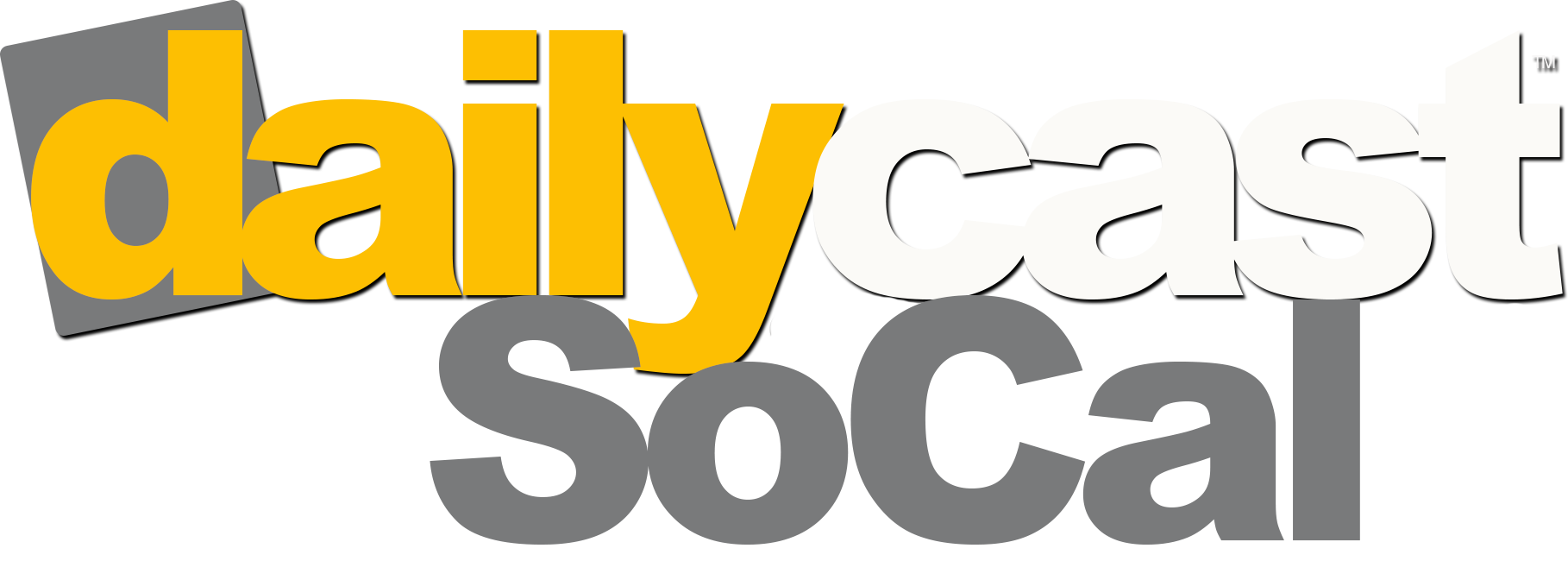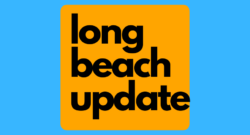Author: dailycastsocal
Diddy’s $61 million home in Los Angeles, California
this is Diddy’s house in Los Angeles California worth $61 million the home spans over 177000 Square ft with eight bedrooms and … source
Droning Massive San Diego No Kings 6-14-25
(without blocked music) Watch in 4K on big screen! San Diego police said the crowd exceeded 60000 people. source
Judge orders Trump to restore $500 million in grant funding to UCLA : NPR
Students stroll past Royce Hall on the UCLA campus in Los Angeles on Aug. 15, 2024. Damian Dovarganes/AP hide caption toggle caption Damian Dovarganes/AP LOS ANGELES — A federal judge has mandated the Trump administration to reinstate $500 million in federal grant funding previously halted at the University of California, Los Angeles. U.S. District Judge Rita Lin in San Francisco issued a preliminary injunction on Monday, indicating the government likely breached the Administrative Procedure Act by failing to provide the required protocols and rationale for federal funding reductions. Instead, the administration sent UCLA vague correspondence indicating that several grants from different agencies were suspended without any detailed explanations. In August, UCLA disclosed that the Trump administration had suspended $584 million in federal grants due to accusations of civil rights violations surrounding antisemitism and affirmative action. Lin later ruled that $81 million in grants from the National Science Foundation should be restored to UCLA, as those cuts violated a June preliminary injunction requiring the NSF to reinstate several grants previously terminated at the University of California, which has 10 campuses throughout the state. The White House did not provide an immediate response to an email from The Associated Press seeking comment on Monday’s decision. The Trump administration has leveraged its control of federal funding to advocate for changes at prestigious universities, which the president claims are overwhelmed by leftist ideologies and antisemitism. The administration has also initiated investigations into diversity, equity, and inclusion initiatives, alleging that they discriminate against white and Asian American students. Columbia and Brown, both Ivy League schools, worked out agreements to maintain funding delayed by the Trump administration under similar accusations that they had insufficiently addressed campus antisemitism. Regarding Harvard, which contested the funding cuts with a lawsuit, a federal judge ruled in early September that the suspension of funds constituted illegal retaliation for Harvard’s refusal to comply with the Trump administration’s requests. The Trump administration previously suggested resolving its investigation into UCLA with a $1 billion payment from the institution. California Governor Gavin Newsom, a Democrat, deemed it an extortion attempt. UCLA has stated that such a vast payment would “devastate” the school. Monday’s ruling pertains to numerous medical research grants from the National Institutes of Health that involve research on Parkinson’s disease treatment, cancer recovery, nerve cell regeneration, and other areas that university officials assert are crucial for enhancing the health of Americans. Source link
[Driving in 4K] Long Beach, California
Long Beach is a city in the U.S. state of California located within the Los Angeles metropolitan area. It is the 43rd most populous … source
MLB roundup: Padres clinch playoff spot with walk-off win in 11th – Reuters
MLB recap: Padres secure playoff berth with thrilling walk-off victory in the 11th inning Reuters Source link
Drugged Driving Emerging as a Growing Risk on California Roads – NBC Palm Springs
Drugged Driving Emerging as a Growing Risk on California Roads NBC Palm Springs Source link
Swastika and MAGA hashtag scrawled near Long Beach Pride headquarters. Police investigation underway
The Long Beach Police Department is investigating anti-LGBTQ+ graffiti that included a swastika and a reference to MAGA and was written on a utility box outside the Long Beach Pride headquarters over the weekend. In a written statement, the Police Department said officers responded shortly before 6 p.m. to the 1000 block of Obispo Avenue about a report of vandalism. The arriving officers were then directed to a utility box where someone had written derogatory statements against the LGBTQ+ community. The incident is being investigated as a hate crime, police said. Long Beach Pride, a nonprofit organization run mostly by volunteers that puts together a popular three-day pride festival in Long Beach, posted photos of the graffiti and a statement from the interim president on Facebook expressing concern and shock over the incident. The photos show expletive-filled statements directed at members of the LGTBQ+ community, along with a Nazi symbol and a hashtag that included the word “MAGA,” an apparent reference to President Trump’s Make America Great Again motto. “We must remember: Pride began as a protest. It has never only been about parades and celebrations — it is about standing up for our right to live openly and fully, to share in all the privileges and freedoms that every American deserves. And we will continue to prevail,” Elsa Martinez, the interim president, wrote in her statement. “We simply ask that you remain vigilant, look out for one another, and continue to show the love and resilience that define us.” Long Beach Mayor Rex Richardson took to X to condemn the incident. “Our city does not tolerate threats or attacks against our LGBTQ+ community. Period,” he said, adding that the city’s had sent its graffiti removal team to the site. “We are living through a dark chapter in our nation’s history, where incidents of hate and violence are on the rise and the political tone being set by the country’s most powerful leaders continues to breed division and hate.” Mayor Rex Richardson Statement on Vandalism and Hate Speech Toward LGBTQ+ Community Yesterday’s vandalism on a utility box in front of the building of Long Beach Pride — the nonprofit that produces our City’s beloved Pride festival and parade — was not just an attack on a… pic.twitter.com/a9LAQweTMD — Office of Mayor Rex Richardson (@LongBeachMayor) September 21, 2025 Long Beach Councilwoman Cindy Allen, whose district includes the Long Beach Pride center, echoed that sentiment in a statement issued to her constituents. “We live in a time where ideas can be exchanged freely, and recently there has been lots of discussion on the nature of free speech, which is protected by the Constitution,” she said. “But what occurred [Saturday] is not a matter of free speech, nor was it a matter of trolling — this was plain and simple, old-fashioned hate and intimidation, and an affront to our values.” She said she hoped that those responsible would be found and prosecuted. Los Angeles County Supervisor Janice Hahn, whose district includes Long Beach, said on X that Long Beach Pride had been a “beacon of love and acceptance for decades” and that her office had committed $2,500 to help boost the center’s security camera system. “My hope is that this will give staff, volunteers and community members peace of mind as they continue their important work,” she wrote on X. “These are dark times, and I know it can feel like we are losing ground in the fight for equality, but I want every LGBTQ+ person in Long Beach and across Los Angeles County to know this: you are not alone, you are valued, and we will stand shoulder to shoulder with you to confront this hate. Last year, California Atty. Gen. Rob Bonta reported that hate crimes, particular those against LGBTQ+ and Jewish communities, had increased in the state by 2.7% from 1,970 reported incidents in 2023 to 2,023 in 2024. “There is absolutely no place for hate in California,” Bonta said in a written statement at the time. “Transparent and accessible data is a critical part of understanding where we are and how we can end hate crimes in our communities. “Everyone has a part to play as we continue to fight intolerance in California,” he said. “And I urge leaders up and down the state to review the data and resources available and recommit to standing united against hate.” Source link
New Legislation Aims to Tackle Homelessness in Southern California: What’s Next?
In an ambitious move to confront the escalating homelessness crisis, policymakers in Southern California have introduced a new set of legislative measures designed to provide immediate relief and long-term solutions for those affected. This comes in response to staggering statistics indicating a continually rising homeless population across the region. Understanding the Crisis The homeless crisis in Southern California has become a pressing issue, with thousands living on the streets. Contributing factors include skyrocketing housing prices, inadequate mental health services, and a lack of affordable housing options. Local governments have struggled to keep pace with the growing need for resources and support. The New Legislation The recent legislation aims to tackle this issue through several key strategies. First, it allocates substantial funding for the construction of affordable housing units, ensuring that lower-income families and individuals have access to a place they can call home. In addition, the measures include provisions for enhanced health services to address mental health and addiction problems, which often intersect with homelessness. Community Involvement and Collaboration Stakeholders from multiple sectors, including local government, non-profit organizations, and community members, are called upon to collaborate as part of the solution. The legislation promotes partnerships to streamline resources and improve access to services for homeless individuals. This collaborative approach is vital for ensuring that the measures have a lasting impact. What’s Next? The implementation of these legislative measures is the next critical step. Local governments will be tasked with developing action plans based on the new guidelines and allocating resources effectively. Community outreach programs will be key in raising awareness and connecting individuals with the services they need. Challenges Ahead While the introduction of this legislation is a significant step forward, challenges remain. Opposition may arise regarding zoning regulations for new housing projects or funding allocations. Additionally, the need for ongoing support and advocacy is paramount to sustain momentum and keep the conversation alive. Conclusion As Southern California endeavors to address the homelessness crisis head-on, the new legislation presents a promising path. By prioritizing affordable housing and comprehensive health services, it seeks to illuminate a way forward for the thousands in need. It is essential for communities to rally together and support these efforts, ensuring that everyone has the chance for a stable, secure future.




![[Driving in 4K] Long Beach, California [Driving in 4K] Long Beach, California](https://wp.fifu.app/socal.dailycast.news/aHR0cHM6Ly9pLnl0aW1nLmNvbS92aS83OUVmZlRWU3ZLUS9tYXhyZXNkZWZhdWx0LmpwZw/e24b6664d6b2/driving-in-4k-long-beach-california.webp?w=250&h=135&c=1&p=100002824)



